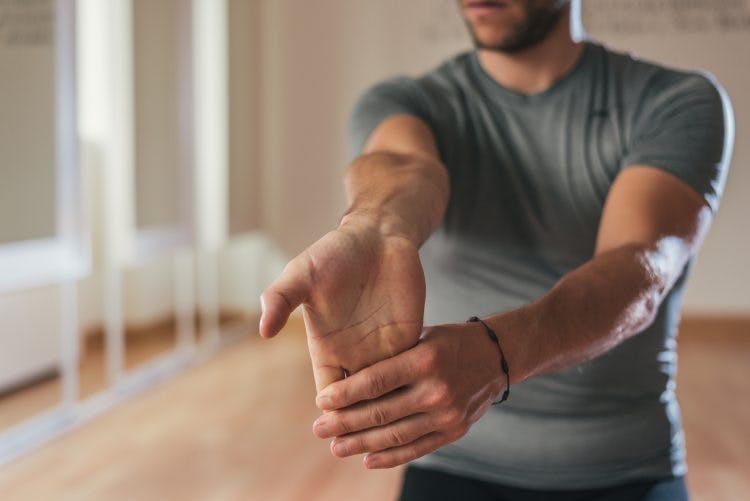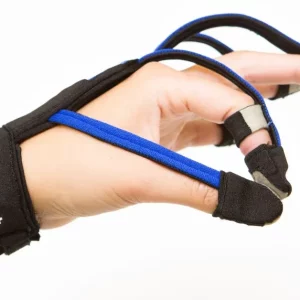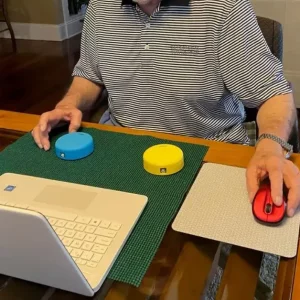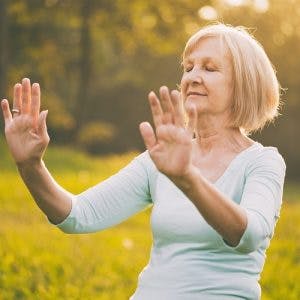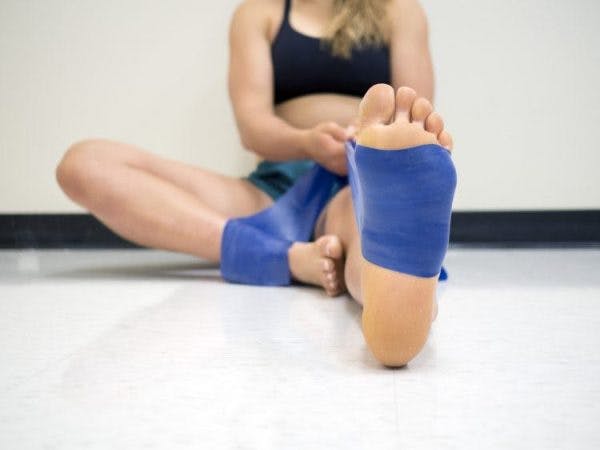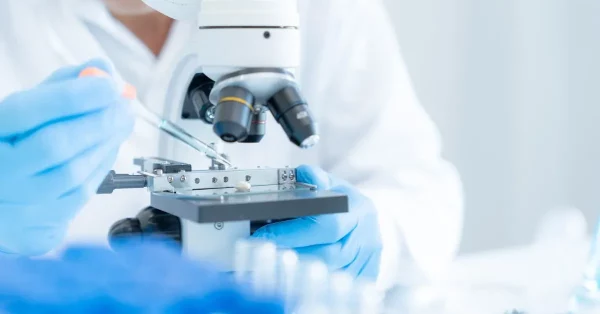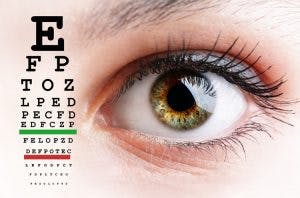Passive range of motion exercises for stroke patients have many benefits, including reducing spasticity and improving mobility. These exercises involve the use of an external force, such as a therapist or one’s unaffected extremities, to move the affected joints.
Since passive range of motion exercises for stroke patients do not rely on the individual being able to move independently, these exercises can be especially effective in helping those with limited mobility and strength. In fact, practicing passive range of motion exercises can even help stroke patients experiencing paralysis regain the ability to move without assistance.
This article defines passive range of motion and describes the benefits of participating in passive exercise. Examples of various passive range of motion exercises for stroke patients to try are also included.
Please use the links below to jump directly to any section of this article.
- What is passive range of motion?
- Benefits of passive range of motion
- Upper body passive range of motion exercises
- Lower body passive range of motion exercises
What is Passive Range of Motion?
Range of motion refers to how much a joint can move in a certain direction. For example, someone with full range of motion of their fingers can completely straighten their fingers and close them into a tight fist. Range of motion is commonly affected after a stroke due to secondary effects such as spasticity or weakness.
There are two types of range of motion: passive and active. Learning the difference between active and passive motion can help stroke survivors understand which exercises may be best for them and how each type of exercise can play a role in their recovery process.
Passive range of motion exercises refer to movements in which the survivor exerts no effort in the targeted muscles. These exercises can be performed independently with the assistance of the unaffected extremities, or with the help of another person, such as a therapist or trained caregiver.
Active range of motion exercises, on the other hand, refer to any movements completed without assistance in which the joints move through part or all of their range of motion. Although active range of motion exercises do not involve weights, resistance bands, or other strengthening equipment, controlled movements with or against gravity can help improve muscle strength.
Some individuals benefit from exercises involving a combination of active and passive movements. These are referred to as active-assisted range of motion exercises, and refer to when the survivor engages their targeted muscles and moves through a specific motion with some assistance provided.
Therapists may recommend active, active-assisted, and/or passive range of motion exercises for stroke patients to improve their mobility. While passive range of motion exercises may be most beneficial for a survivor with very limited mobility, they may progress to active-assisted or even purely active range of motion exercises as they continue to recover their mobility.
Benefits of Passive Range of Motion Exercises
There are many benefits of practicing passive range of motion exercises for stroke patients. While passive range of motion exercises can be beneficial even years after stroke, studies have shown that early passive range of motion exercises, starting during the first 48 hours following one’s stroke, can result in improved mobility outcomes.
In addition to improving mobility, passive range of motion exercises can:
- Improve circulation
- Reduce the risk of pressure ulcers, especially among bedridden survivors
- Prevent muscle/joint stiffness and contractures
- Decrease edema (swelling)
More recently, robot-assisted therapies have been developed to help survivors complete passive range of motion exercises independently. Using a robotic device can promote more frequent participation in passive exercises for those who would be unable to complete these exercises without continuous assistance.
Although passive range of motion exercises do not require the survivor to be fully engaged, there are many benefits of active participation. Research has shown that mental practice, the process of visualizing oneself performing a movement, can result in improved functional outcomes. Therefore, combining passive range of motion exercises with mental practice can optimize adaptive changes in the brain, resulting in lasting improvements.
Adaptive brain rewiring is stimulated through the repetitive practice of tasks such as passive exercises and mental practice. This rewiring process, referred to as neuroplasticity, involves the creation and strengthening of neural pathways to improve functional performance. Therefore, practicing passive range of motion exercises for stroke patients consistently and repetitively can be an effective way to promote recovery.
Want 25 pages of stroke recovery exercises in a PDF? Click here to download our free Stroke Rehab Exercise ebook now (link opens a pop up for uninterrupted reading)
Upper Body Passive Range of Motion Exercises
Here are a few of the best upper body passive range of motion exercises for stroke patients. While these are great passive exercises to try, consulting a physical or occupational therapist can help survivors determine precisely which exercises would be best for their condition. Each exercise should feel like a stretch, but should never be painful.
1. Hand Stretch
Place the palms of the hands together. Next, push with the fingers of the unaffected hand to gently straighten and stretch out the fingers of the other hand. Relax, then use the unaffected hand to bend the affected fingers into a fisted position.
2. Wrist Stretch
Start by interlacing the fingers. Then gently push the affected wrist back toward the forearm. This should feel like a nice stretch, but should not be painful.
3. Elbow Stretch
Again, start with the fingers interlaced. Next, use the unaffected arm to bend the elbows upward until the hands touch the chest (if possible). Then, relax and extend the arms to straighten the elbows. For an added challenge, after bending the elbows, try pushing the arms straight out from the chest using the unaffected arm to target both shoulder and elbow mobility.
4. Tabletop Stretches
Clasp the hands together, then set the arms on a table. Next, glide the arms across the table, reaching straight ahead. If the hands stick to the table, place a washcloth or hand towel underneath them to slide more easily. Lean forward to stretch the shoulders, then return to an upright position.
To further improve shoulder mobility, start again with the hands clasped on the table. This time, work on making large circles on the table, switching between clockwise and counterclockwise directions.
5. Cane Stretches
Starting in either a lying or seated position, grasp both ends of a cane and then push the affected arm outward, as if the affected arm was making a snow angel. Again, this should feel like a stretch, but should not cause pain.
To work on rotating the shoulder, start with both hands holding the cane. With the affected elbow resting next to the side, push just the affected forearm outward. Expect a stretch, but much less movement with this exercise.
Complete each of these upper body passive range of motion exercises for stroke patients at least twice per day, repeating each exercise 5 times. Holding the stretch for 5-10 seconds can help to maximize mobility.
Lower Body Passive Range of Motion Exercises
Often, upper body passive range of motion exercises are easier to complete independently because the unaffected hand can easily reach and grasp the affected arm to move it. However, lower body passive range of motion exercises for stroke patients can still be greatly beneficial. Here are few of the most effective lower body passive exercises.
1. Ankle Stretch
Starting in a seated position with the feet flat on the ground, wrap a belt or strap around the front portion of the foot. Pull up on the strap to raise the toes upward, then release. If this is too challenging, ask a skilled caregiver to grasp the front portion of the foot and bend it upward and downward to stretch the ankle.
2. Knee Bends
Begin by lying flat on a bed or the floor. Ask a skilled caregiver to grasp beneath the heel and just past the knee of the affected leg, then bend the knee up toward the ceiling. Relax to return the knee to an extended position.
3. Hip Stretch
Start by sitting in a chair with the feet flat on the floor. Using the hands or a strap, grasp beneath the thigh and bring the hip upward as if marching. For an added challenge, start by sitting on the floor with the legs straight out in front of the body before bringing the affected thigh toward the chest.
Again, it is important to practice lower body passive range of motion exercises multiple times per day, holding each stretch for 5-10 seconds to boost mobility. Stopping each stretch before the point of pain is essential to prevent further injury. It is best to consult with a physical or occupational therapist to ensure proper form and to determine which exercises would be most effective.
Understanding Passive Range of Motion Exercises for Stroke Patients
Practicing passive range of motion exercises, whether independently or with the assistance of another individual, is an excellent way to promote recovery after stroke. Passive range of motion exercises can be used with nearly all stroke survivors, but can be especially beneficial for those with very limited active movement.
While there are a multitude of passive range of motion exercises for stroke patients, the best options are those that target affected areas of the body. Although survivors should feel as though they are stretching while completing passive range of motion exercises, the exercises should never be painful. For further passive range of motion exercise recommendations, consider consulting a physical or occupational therapist to discover a customized exercise plan.

